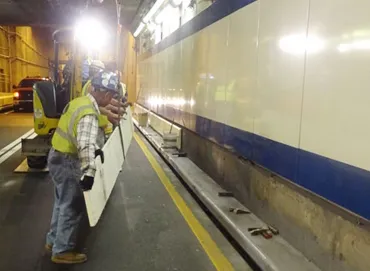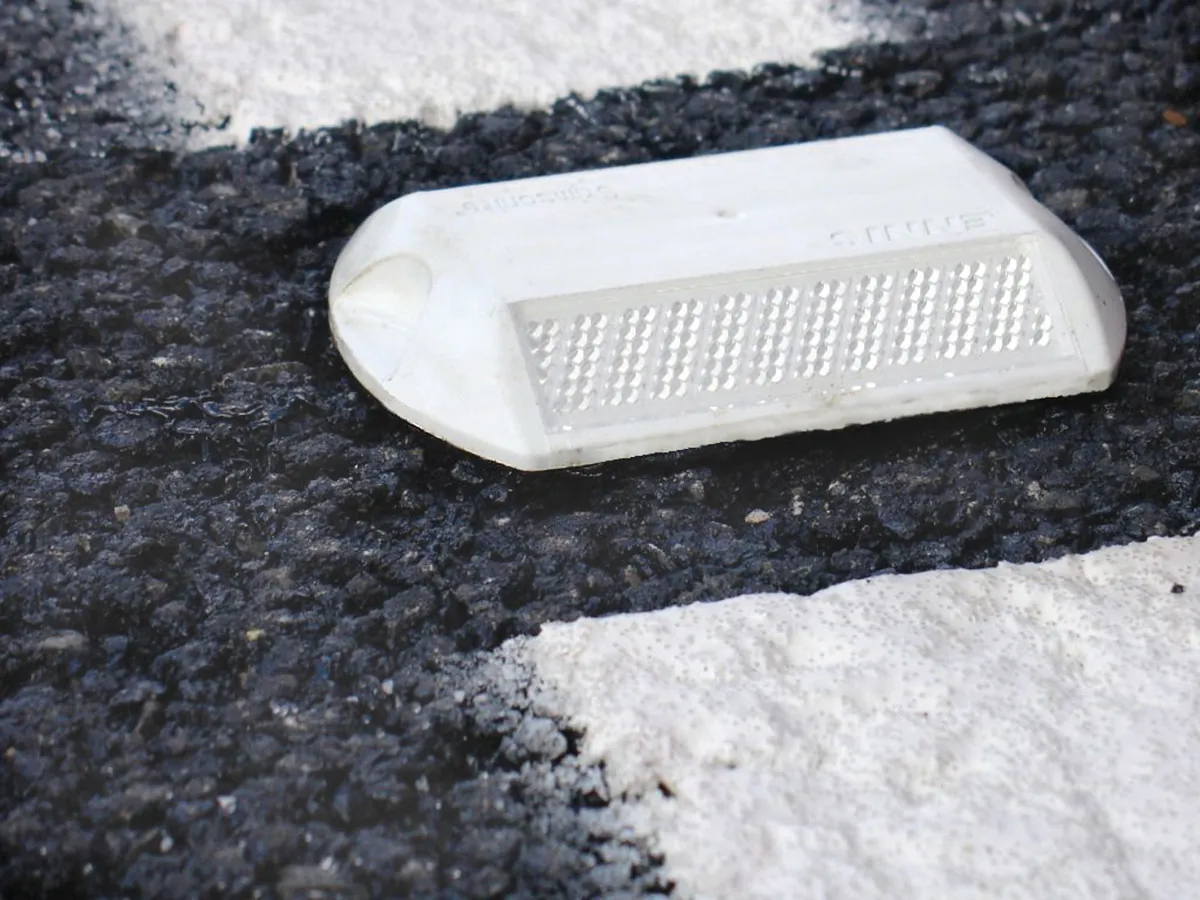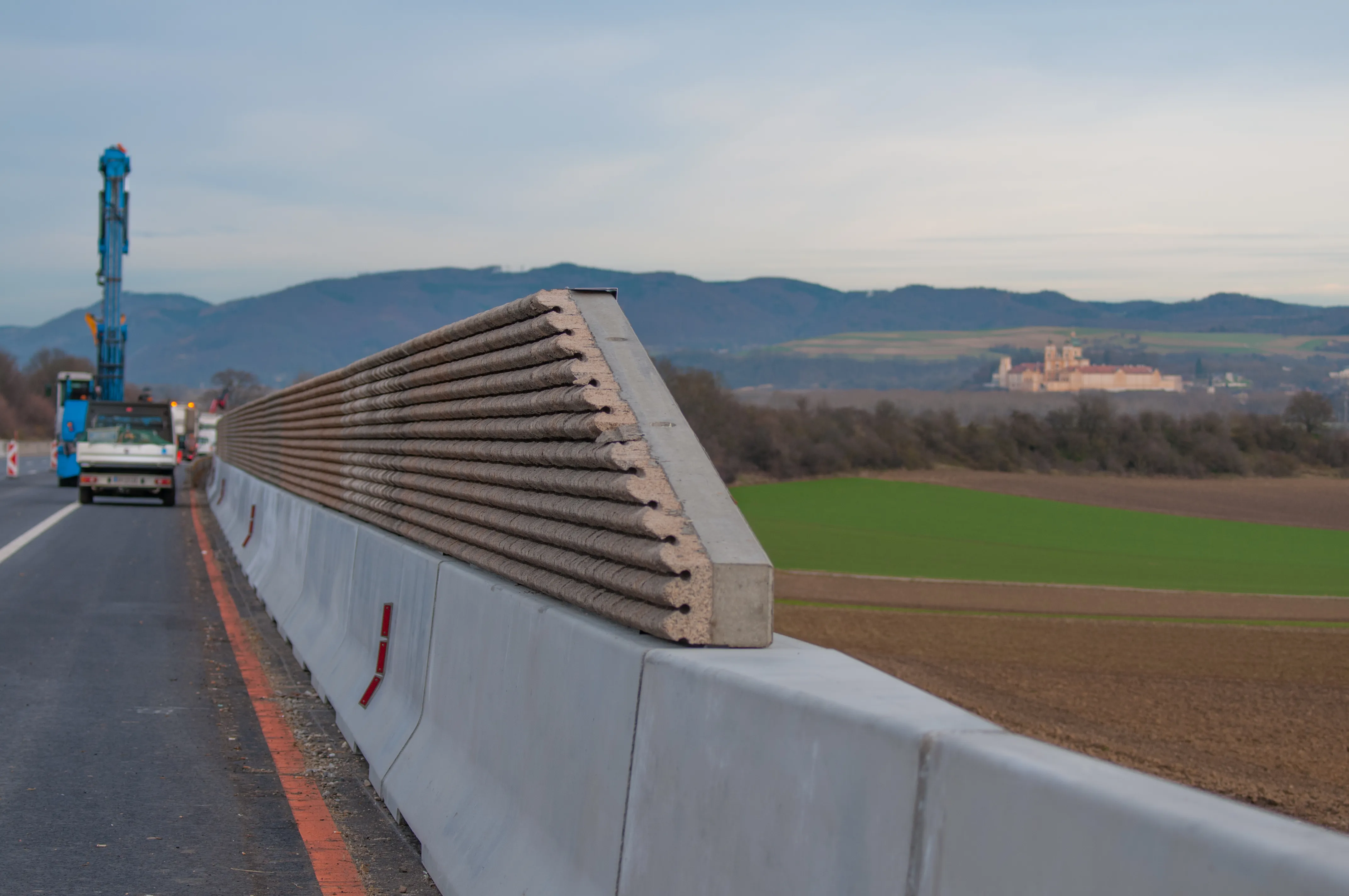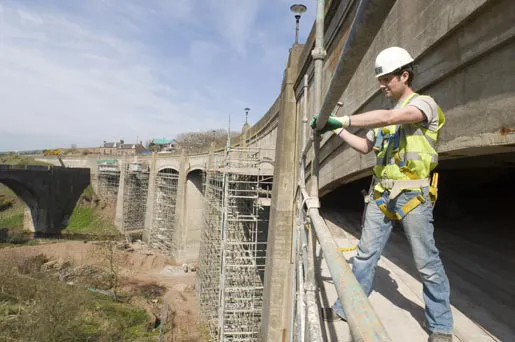
A continuous visible stripe is an integral part of each panel. The stripe consists of highly retro-reflective glass beads placed in a wide vertical stripe that results in year-round, all-weather, high driver visibility, says Castek, a division of
The systems consists of precast polymer concrete barrier panels that act as a stay-in-place form. A thermosetting resin binder develops high strength and good resistance to the roadside elements and corrosive attack. The quantity of binder resin is between 8-12% of the total weight of the polymer matrix. Pre-dried blended aggregates - a combination of silica flours, granite and silica - comprise the balance of the polymer matrix.
Fibreglass mesh is placed in the panels during casting for additional reinforcement.
Threaded anchor inserts are cast into the back face of the panel to accept threaded hooked rods. Pull-out values for each cast-in insert meet or exceed 453kg. Alternately, recessed anchor pockets can be cast into the panels for easy retrofit applications from the traffic side. Special caps are available to cover the recessed anchor pockets after panel installation.
Minimum performance for the retroreflective surface is 1000mcd/Lx/m2 (milli-candelas/lux/m2) at a geometric arrangement equivalent to an EcoLux Reflectometer that is at a 3.5º co-entrance angle and 1º observation angle.
The polymer concrete barrier panels are gel-coated on the traffic side to facilitate easy cleaning and to enhance panel aesthetics and colour.
Among the projects in which Visi-Barrier has been used are the George Washington Bridge in New York, the Kingston-Rhinecliff Bridge toll plaza, also in New York, and the Cumberland Gap Tunnel between Kentucky and Tennessee.








